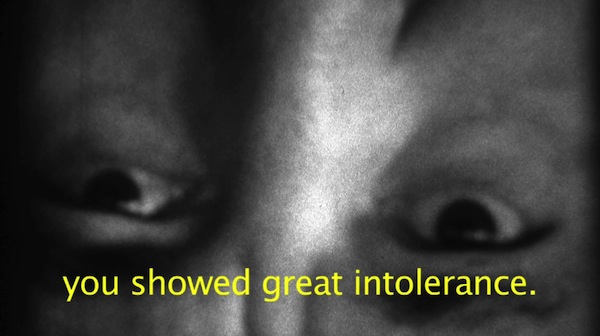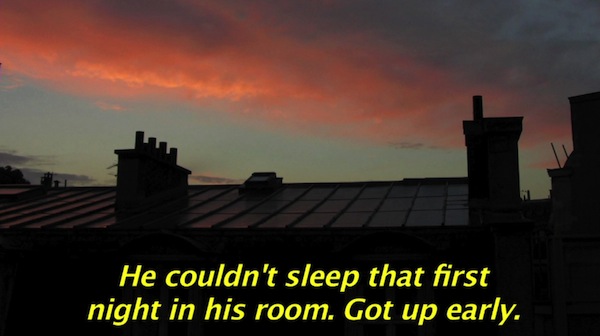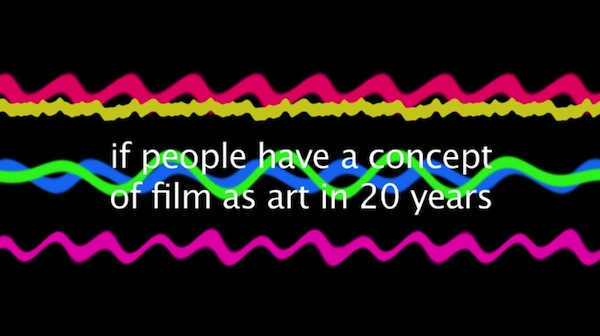
Last Days: “Tony Allegro: Recent Experimental Films and Photography”
By Janet Batet, Miami Arts Journalist
Anthony (Tony) Allegro is one of the local artists who have worked mostly in this field of video art. His long and sustained development began towards the late 1960s, right in the center of the algid New York avant-garde scene that was the leading edge of this form of visual expression. Since then, Allegro has been steadfast in exploring the tension between image and sound, thus generating unusual and unexpected juxtapositions in his films, dismembering traditional narrative structures.
Tony Allegro. The Eyes of Paul Sharys. Still from video. image courtesy of Tony Allegro and The 6th Street Container.

Tony Allegro. Photographic work. Image courtesy of Tony Allegro and The 6th Street Container.

Tony Allegro. Romance and Eternity. Still from film.Image courtesy of Tony Allegro and The 6th Street Container.

Vox. Still from video. Image courtesy of Tony Allegro and The 6th Street Container.
Such is the spirit that animates an exhibit right now on view to the public at the 6th Street Container: “Tony Allegro: Recent Experimental Films and Photography”. The show includes a varied selection of recent creative photography and a retrospective compilation of his most recent experimental works of video art.
Based in Miami since 1980, Tony Allegro was one of several artists who formed that iconic group NADA that took to the streets of the city energizing the local artistic scene of those years. The irreverent group included Janet Papparelli, Fernando Garcia, Jose Gonzalez Boada, Fredric Snitzer and Adalberto Delogado. NADA preferred to show work on Metrorail trains rather than the constrained traditional exhibition spaces available at that time. Motivated by the purely experimental and such alternate exhibition venues to show their work, most of the work of this group has thus been poorly documented and has passed into urban myth or legend, all but forgotten by our city.
Something similar occurs with Tony Allegro’s work. Known for his role as a professor of cinema at the University of Miami where he has held his position for decades, his work is not well known. His interest in the free association of image and sound becomes an active bridge to memory. It is not surprising then that the French Letterist movement of the 1950s has inspired Allegro’s work. Founded by Rumanian poet, painter and filmmaker Isidore Isu. Letterism has its roots in Dadaism and Surrealism. It jumbles up semantic content, syntax and logical order. In the case of the cinema, the movement was fundamental in the search for a new autonomous syntax, free from the tyranny of narrative structure.
In Allegro’s work, which he describes as “neo-letterist”, the discrepancy between sound and image dominates. His so called narratives or stories, whose development does not lead to the expected narrative outcomes, often have a soundtrack that is turned upside down and backwards, increasing the sense of disorientation. The subtitles have little to do with the words spoken. While having some parallels in the sound track, they have little relationship with the meaning of what we read, see and hear.
In “Romance and Eternity” (2010) Allegro takes a random message left on his answer machine years ago and incorporates it into the work. The enigmatic message, reaffirmed by a fuzzy image of a woman on the phone, and indecipherable subtitles generate a tension between the sense of strangeness of the message and the imperative tone of the call.
Many early works by Allegro deal with the self-portrait. “Tony Self-Portraits” and “L.A. (Los Angeles) Portraits”, both from 1977, are examples of this genre. With a fixed camera and no guiding script, each portrait suggests the artist’s verbal intention. They are sometimes irreverent and often times intimately confessional. The concentration on fragmentary details of the image and the decomposition of the cinematographic frame divided into smaller sub-frames, reproduce and take apart the presence of the “self”. This is a fundamental aspect of the series.
Towards the 1980s, the artist began a revision of his characteristic film language, releasing one of his most iconic works: “Toxic Syndrome” (1985). Even though the filmmaker has no specific documentary intent, this experimental video is a reflection of the artistic and intellectual environment surrounding him in the1980s, and more specifically, of the local Miami art scene. In three parts, “Toxic Syndrome” includes abstract images tied intimately to interviews, confessions and manifestos of artists and friends of the period. Among these artists is Fernando Garcia, one of the most radical artists of that 80s scene whose idiosyncratic work remains almost forgotten.
The constant flickering of the image and the interposition of images that appear out of place, contribute to a reconstruction of the atmosphere of that epoch in the way that memory reconstructs a series events not with cool logic but with an irrational intensity. In this sense, “Toxic Syndrome” should be understood as a simulation of memory rather than a document of the times.
In Allegro’s work, the camera concentrates on color, changes of light and shadow. The “collage” is another technique that the artist employs. Working with the Silkscreen printing technique, Allegro appropriates, without pre-conceived ideas, images from western art’s iconography from Muybridge to Warhol in a sort of remix where memory and chance interconnect, generating an entirely new universe free from all narrative structure.
“Tony Allegro: Recent Experimental Films and Photography” is a “must see” of the recent work of this authentic creator of images. At the same time, the exposition continues the curatorial philosophy that has distinguished The 6th Street Container since its establishment as an alternative exhibition space of experimentation, interested in the presentation of contemporary art and the rescue of the local cultural heritage so many times ignored.
“Tony Allegro: Recent Experimental Films and Photography” may be seen until April 25th at The 6th Street Container, 1155 SW6th St. Miami, Florida.
Recent Content
-
Artsarticle ·
-
Artsarticle ·
-
Artsarticle ·
